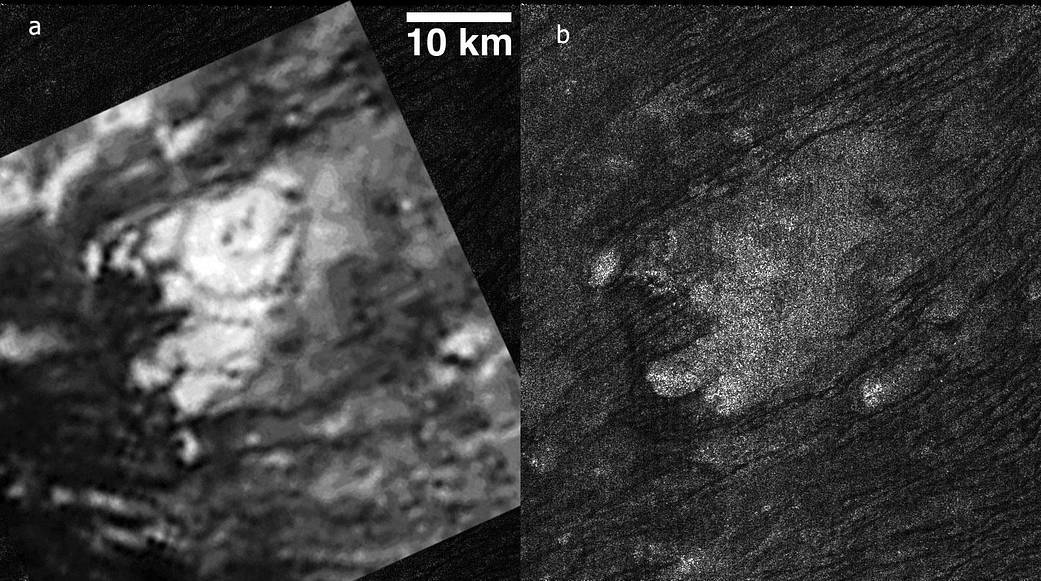
These side-by-side images obtained by NASA’s Cassini spacecraft show the feature named Tortola Facula on Saturn’s moon Titan. The left image was obtained by the visual and infrared mapping spectrometer data on Oct. 26, 2004, at a resolution of 2 kilometers (1 mile) per pixel. This mosaic focuses on an area around 9 degrees north latitude and 145 degrees west longitude. In 2005, scientists interpreted Tortola Facula as an ice volcano.
The right image shows the same feature, as seen by Cassini’s radar instrument on May 12, 2008, at a much higher resolution of 300 meters per pixel. Scientists now think that this feature is a nondescript obstacle surrounded by obvious wind-blown sand dunes, similar to those commonly found in this region of Titan. In radar images, objects appear bright when they are tilted toward the spacecraft or have rough surfaces.
The Cassini-Huygens mission is a cooperative project of NASA, the European Space Agency and the Italian Space Agency. The Jet Propulsion Laboratory, a division of the California Institute of Technology in Pasadena, manages the mission for NASA’s Science Mission Directorate. The Cassini orbiter was designed, developed and assembled at JPL. The radar instrument was built by JPL and the Italian Space Agency, working with team members from the United States and several European countries.
For more information about the Cassini-Huygens mission visit https://www.nasa.gov/cassini and http://saturn.jpl.nasa.gov
Image credit: NASA/JPL-Caltech/University of Arizona























